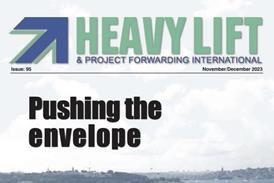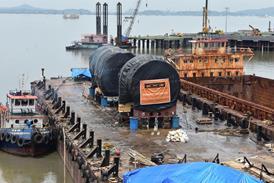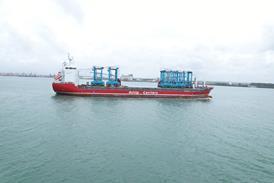December 16 - In Drewry Maritime Research's recent report, it claims that alliances between the world's largest container lines will have "far reaching consequences" for the industry as lines search for greater economies of scale.
The Federal Maritime Commission (FMC) will host competition authorities from the United States, the European Union and China on December 17, 2013 in Washington DC, USA to discuss such container shipping line alliances.
The G6 Alliance has proposed a sharing of capacity into the Asia/West Coast North American, and North Europe/East Coast North America trade lanes, which could come into effect during the second quarter of 2014. The tie-up will see Hapag-Lloyd, OOCL, and NYK almost double the frequency of their current seven eastbound sailings a week from Asia to the West Coast of North America by sharing vessels with HMM, APL and MOL and vice-versa, says Drewry Maritime Research.
The G6 Alliance move comes in response to the P3 network, a proposed long-term strategic alliance between three of the world's largest container lines - Maersk Line, Mediterranean Shipping Co and CMA CGM - which together will operate a fleet of 225 ships on the major east-west trade lanes, as detailed by HLPFI earlier in December.
(http://www.heavyliftpfi.com/news/fmc-p3-summit-set-for-december-27.html)
The G6 Alliance aims to improve the economies of scale on the east and west trade lanes by effectively combining its member's vessel capacity.
In order to benefit from the economies of scale, Drewry Maritime Research adds that some services will be merged to enable the deployment of larger vessels. This in turn provides the regulatory authorities with a number of questions as to whether it should be approved.
Shippers look to benefit from improved service frequency and a regular supply of vessel capacity in the short term, reducing the risk of shutouts and rollovers, says Drewry Maritime Research. Although, in the long term, the risk to the shipper resultant from reduced competition is apparent - those sharing capacity may end up competing only on price and not service differentiation - as direct port pair frequencies, schedule reliability and transit times will be identical.
Drewry Maritime Research highlighted a secondary, but equally prominent point relating to the establishment of such alliances. US carrier Atlantic Container Line recently submitted the following statement to the US' Federal Maritime Commission: "Should the P3 alliance be approved, every remaining carrier will be forced to join forces in a similar bloc to remain competitive. The single independent carrier will go out of business.
"American exporters will no longer have a large portfolio of carriers to choose from. Instead, he will have only two or three big consortia to choose from, with service one or two days per week instead of seven days per week as today. The smaller terminal operators, smaller truckers, smaller logistics vendors and smaller ports will quickly disappear."
The outcome of the meeting will be between global regulators and competition authorities will continue to be followed by HLPFI.
http://ciw.drewry.co.uk/features/g6-expansion-just-the-tip-of-the-iceberg/#.Uq8oeI3Y-u5















